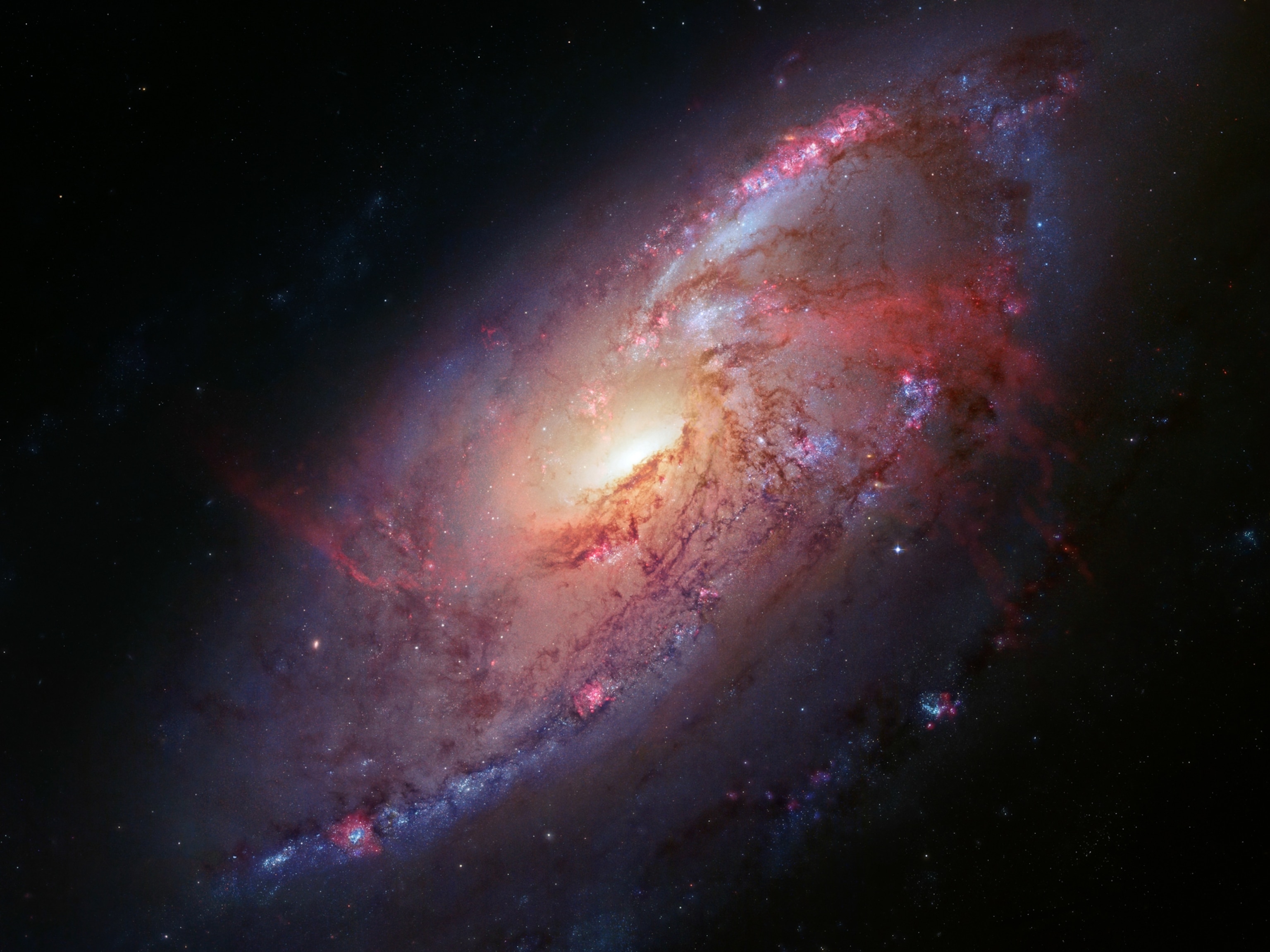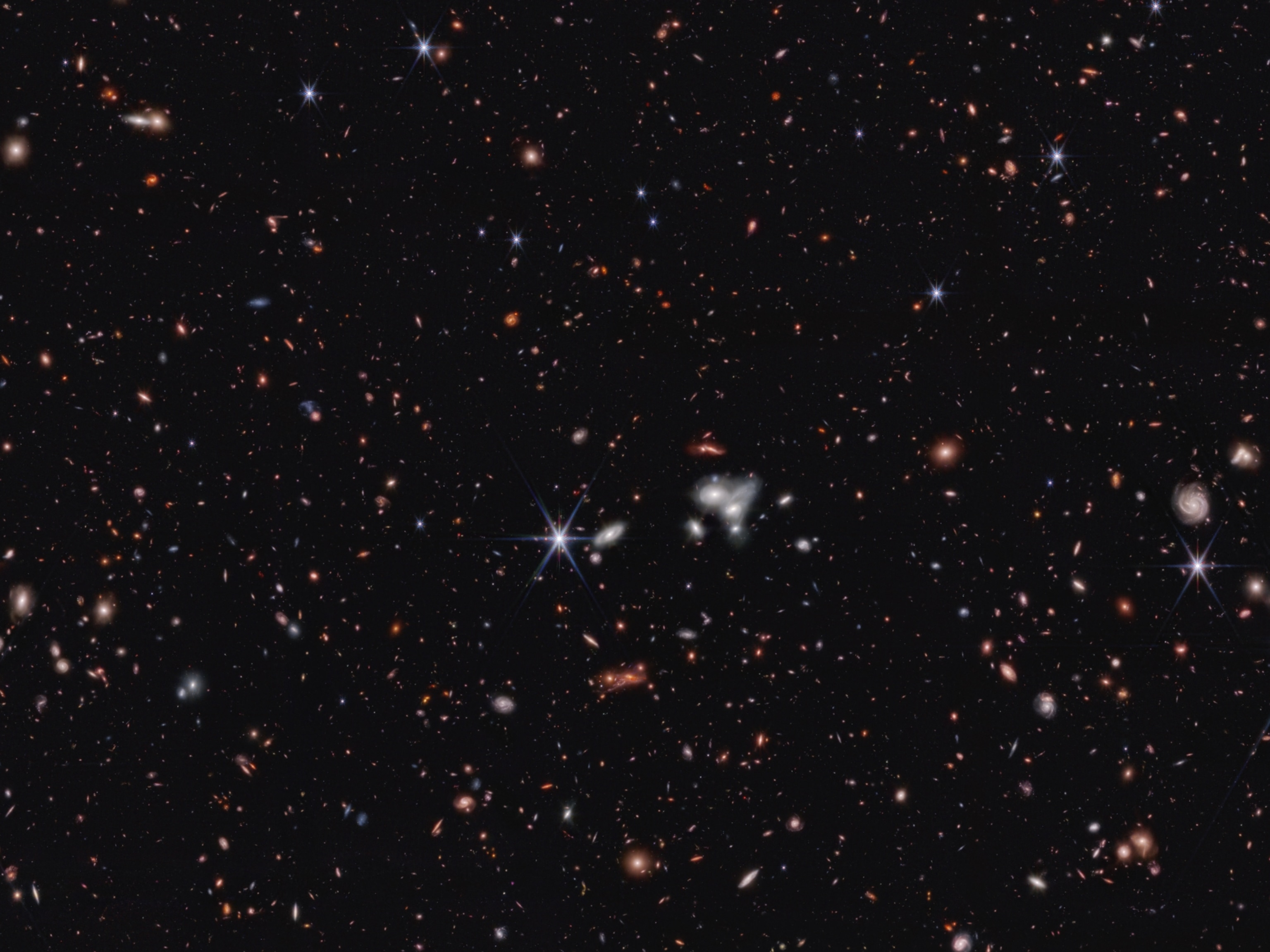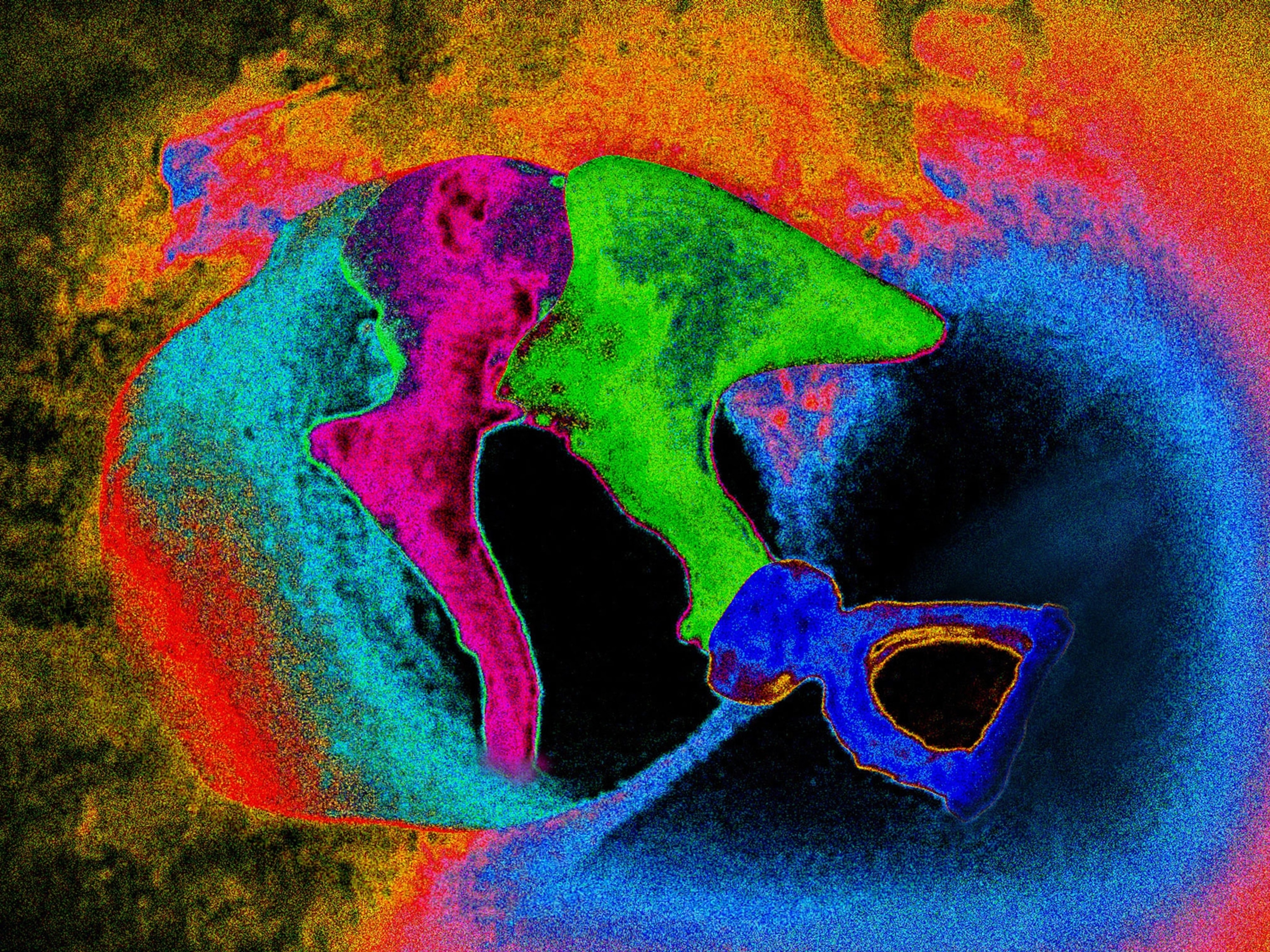
"God Particle" Collider Rebooting to Be Most Powerful Yet
Stakes are high for the Large Hadron Collider's next run, experts say.
The world's biggest and most powerful particle accelerator, credited with discovering the so-called God particle in 2012, is getting rebooted for what scientists say could be a big second act.
The Large Hadron Collider (LHC) will double its power by running on the highest energy level ever reached by a particle accelerator, scientists announced Monday.
The Large Hadron Collider is best known for detecting the Higgs boson in 2012. Nicknamed the God particle, the subatomic Higgs helps explain why much of the mass in the universe exists. The discovery garnered a 2013 Nobel prize for the theorists who first predicted the existence of the Higgs in the 1960s. (See Large Hadron Collider pictures.)
Housed in an oval-shaped, 17-mile-long (27 kilometer) tunnel beneath the French-Swiss border, a beefed-up Large Hadron Collider could discover even more new particles.
Finding the Higgs was only a "starting point," said Fabiola Gianotti, a particle physicist and former spokesperson for the ATLAS (A Toroidal LHC Apparatus) Experiment, which found the Higgs boson, on Monday.
"At the moment we don't know [the Higgs] as well as the other elementary particles—with a new friend, you want to know him or her better," she said.
The Large Hadron Collider uses powerful magnets to smash beams of protons together at nearly the speed of light. (Learn more about atom smashers.)
Last week, one-eighth of the giant collider was cooled to its operating temperature of -271.3 degrees Celsius—a temperature colder than outer space—while some accelerators that supply the collider beams were started up for the first time since 2012, when the instrument was shut down for maintenance and upgrades.
The plan is for the new and improved atom smasher to begin conducting experiments again in January 2015, said Rolf-Dieter Heuer, director general at the European Organization for Nuclear Research (CERN), which operates the collider.
"There's a huge amount of physics to be done," said Heuer, speaking Monday at a press briefing at the Euroscience Open Forum in Copenhagen.
"Without This Particle, You Cannot Exist"
The Higgs boson, proposed five decades ago by British physicist Peter Higgs, explains why some particles, such as quarks—which are the building blocks of protons, among other things—and electrons have mass, while others, such as light-carrying photon particles, do not. (Read about the God particle in National Geographic magazine.)
According to Higgs, the universe is bathed in an invisible field similar to a magnetic field, called the Higgs field.
If a particle can move through this field with little or no interaction, there will be no drag, and that particle will have little or no mass. Alternatively, if a particle interacts significantly with the Higgs field, it will have a higher mass.
That's why the Higgs boson is responsible for the much of the mass of matter in the universe.
"Without this particle, you cannot exist," said Heuer.
Gianotti, who works with CERN, noted that until last July, "we had discovered 16 elementary particles. The Higgs boson is number 17—it is completely different than all of the others."
For instance, the Higgs doesn't fit into what was previously two types of particles—matter and force carriers—but instead belongs to a third category, called the scalar, making it the only one of its kind known in the universe.
Does Higgs Have "Brothers" Out There?
During its first three-year run, from 2010 through 2012, the collider ran at 7 to 8 tera electron volts (TeV), a unit of energy used in particle physics.
In 2015, scientists hope to run the collider at 13 TeV. Since higher-energy beams can reveal particles with heavy mass, the Hadron collider may unveil heavier particles previously unknown to mankind. (The Higgs is relatively light, which is another mystery to physicists.)
For instance, a theory called supersymmetry suggests that the Higgs coexists with four other sibling particles that have similar masses but different electrical charges.
"If we increase our [energetic] reach, we may see the brothers of the Higgs," said Samira Hassani, a particle physicist at France's Commissariat à l'Énergie Atomique (CEA) who works with CERN. (Related: "'God Particle' May Be Five Distinct Particles, New Evidence Shows.")
Dark Matter Dream
Scientists are also hoping to find out how Higgs interacts with other particles, a subject of ongoing research.
On Monday, CERN released a study showing that the Higgs boson decays into fermions, or the particles that make up matter.
This finding, published in the journal Nature Physics, supports the idea that the Higgs boson behaves in a way that's consistent with the standard model of physics—the so-far successful theory that explains how fundamental particles interact with the elementary forces of nature.
But with the Hadron operating at such intensity, Gianotti said, there is the tantalizing possibility the Higgs is "a door to new physics," or other theories about how our universe works that we just don't know yet.
Take dark matter, that theoretical, invisible substance that makes up 95 percent of our universe. We know what makes up 5 percent of the universe, which is represented by structures we can see, like the galaxies and planets and stars.
"All of our studies are based on what we call the standard model," said Hassani, but "dark matter is still an unanswered question. There must be a new thing—new physics—we need to understand." (See "Dark Matter Hits the Average Human Once a Minute?")
Added Gianotti: "Our dream is that when we switch on the [Large Hadron Collider] in 2015 at higher energy, we could be able to produce a particle that could explain dark matter.
"This would be a great triumph for science," she said.
Related Topics
You May Also Like
Go Further
Animals
- Orangutan seen using plants to heal wound for first timeOrangutan seen using plants to heal wound for first time
- What La Palma's 'lava tubes' tell us about life on other planetsWhat La Palma's 'lava tubes' tell us about life on other planets
- This fungus turns cicadas into zombies who procreate—then dieThis fungus turns cicadas into zombies who procreate—then die
- How can we protect grizzlies from their biggest threat—trains?How can we protect grizzlies from their biggest threat—trains?
Environment
- What La Palma's 'lava tubes' tell us about life on other planetsWhat La Palma's 'lava tubes' tell us about life on other planets
- How fungi form ‘fairy rings’ and inspire superstitionsHow fungi form ‘fairy rings’ and inspire superstitions
- Your favorite foods may not taste the same in the future. Here's why.Your favorite foods may not taste the same in the future. Here's why.
- Are the Great Lakes the key to solving America’s emissions conundrum?Are the Great Lakes the key to solving America’s emissions conundrum?
- The world’s historic sites face climate change. Can Petra lead the way?The world’s historic sites face climate change. Can Petra lead the way?
History & Culture
- Meet the ruthless king who unified the Kingdom of Hawai'iMeet the ruthless king who unified the Kingdom of Hawai'i
- Hawaii's Lei Day is about so much more than flowersHawaii's Lei Day is about so much more than flowers
- When treasure hunters find artifacts, who gets to keep them?When treasure hunters find artifacts, who gets to keep them?
Science
- Why ovaries are so crucial to women’s health and longevityWhy ovaries are so crucial to women’s health and longevity
- Orangutan seen using plants to heal wound for first timeOrangutan seen using plants to heal wound for first time
Travel
- 5 of Uganda’s most magnificent national parks
- Paid Content
5 of Uganda’s most magnificent national parks - On this Croatian peninsula, traditions are securing locals' futuresOn this Croatian peninsula, traditions are securing locals' futures
- Are Italy's 'problem bears' a danger to travellers?Are Italy's 'problem bears' a danger to travellers?







